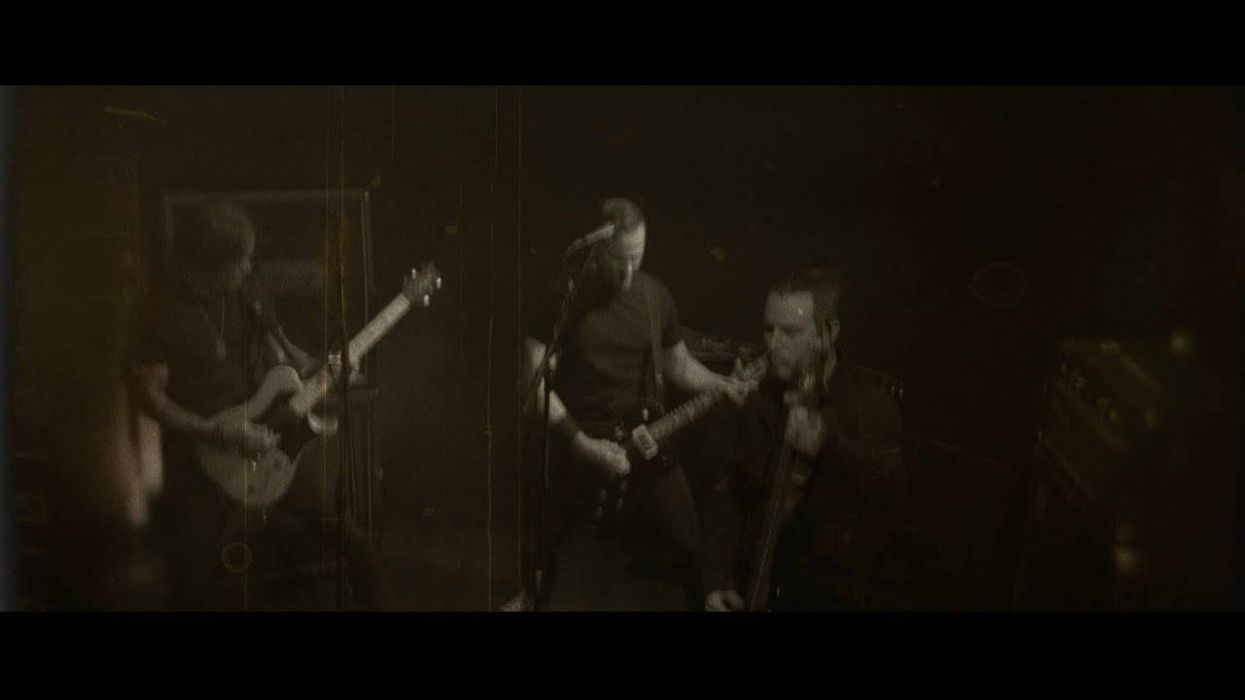Over 20 years as a luthier, Jim Worland has exhibited a strong experimental streak, creating wonderfully idiosyncratic instruments like a lap steel shaped from a slab of live-edge walnut and a 20-string electric-acoustic hollowbody harp guitar. But Worland does “classic” too. In his one-man shop in Rockford, Illinois, he builds a range of traditional steel-string acoustics in sizes ranging from parlor to jumbo. They can be customized with bracing and top thicknesses that suit a client’s playing style.
Worland’s new Prairie model emphasizes simplicity. And at $1,950, the guitar is relatively affordable for a hand-crafted instrument—and less expensive than many finer factory-built guitars.
Bare Bones But Built To Last
Worland’s Prairie is based on an OM/000 shape. With its sharp, squared-off headstock and simple ebony bridge, it evokes a classic Martin 000-18—a standard bearer for elegant simplicity in a small body if there ever was one. The Prairie can be ordered with a Sitka spruce or Western red cedar soundboard and Honduran mahogany back and sides. Our review model uses the more traditional spruce/mahogany combination.
Material selection is clearly one of Worland’s priorities—and talents. The spruce top is finely grained, devoid of imperfections, and has a hint of reddish color that’s a great match for the warm and glowing mahogany used for the back, sides, and neck. The ebony fretboard and bridge looks as much like mineral as wood: straight-grained, non-porous, and uniformly black.
While the most essential design elements and the Prairie’s scalloped X-bracing are traditional enough, the neck joint, which Worland calls “heel-less,” is a notable departure from pure, Martin-style construction methods. The neck, which joins the body at the 14th fret, is made from a single piece of wood, seated in a reinforced body pocket and affixed with machine bolts that screw into steel-threaded inserts.
Ornamentation on our Prairie is streamlined, to say the least. Some players will find the design tastefully restrained. Others might find it insufficiently sexy. But the lack of ornamentation highlights the impeccable construction and beautiful materials. Apart from black binding on the guitar’s top and back and a black outline at the edge of the soundhole, the guitar is free of embellishment. There isn’t even a headstock logo—just a paper label inside the guitar.
What the Prairie lacks in flash, it makes up for where it counts. The 20 medium-jumbo frets are smoothly crowned and polished, and the bone nut and saddle are cut to perfection. Binding is perfectly tight and flush with the body, and the satin lacquer finish feels smooth and even over the whole guitar. A look inside betrays no sloppy sanding and gluing of the kerfing and bracing.
Slinky Getting Around, Beautiful Sound
When I first played the Prairie, I felt a little disoriented because the lack of a heel makes the neck feel extra-long, but that doesn’t affect the guitar’s superb balance, and the benefit of improved access to higher frets quickly becomes apparent. The fretboard is built around a modern compound radius that measures 9.5" at the nut and 12" at the soundhole.
Ratings
Pros:
Luthier-made, top-quality OM guitar for an unbeatable price. Superlative sound and playability.
Cons:
Very few options. No available electronics.
Tones:
Playability/Ease of Use:
Build/Design:
Value:
Street:
$1,950
Worland Guitars Prairie
worlandguitars.com
Though the nut is a fingerstyle-friendly 1.75" wide, it’s not at all difficult playing chords with thumb-fretted bass notes.
The Prairie sounds beautiful, possessing a bell-like clarity and resonance. Like any great OM, the bass is deep without dominating, the midrange is present and not muddy, and the treble is abundant without being shrill. It is, however, remarkably loud for an OM and could probably pass for a dreadnought or jumbo in the right recording situation.
The combination of 1 3/4” nut and 2 1/4” saddle spacing make the Prairie perfect for fingerstyle. I tried playing some Robert Johnson transcriptions and Nick Drake songs and found the guitar dynamic, resonant, and well suited to the lowered tunings favored by these players. The Prairie sounds just as good when strummed, and there’s a surprising amount of headroom considering its size. In any style of accompaniment from Carter-style to basic pendulum strumming, the Worland maintains a strong presence and authority, and great note-to-note separation within chords.
The Verdict
With the Prairie, Jim Worland has delivered a completely handmade OM crafted of high-grade spruce and mahogany for less than two grand. While that’s not inexpensive by any stretch, it’s a bargain-basement price for a luthier-built creation these days. (A good factory-made OM can cost as much or more.) A diehard traditionalist might not ditch a prized Martin for the Worland. Nitpickers and purists may take issue with his neck design, as they do with the bolt-on NT joint on Taylor’s excellent sounding up-market guitars. But for a player not devoted to a particular brand—and who values function over form—the Prairie is bound to be a remarkable companion.





















